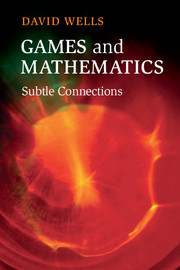Book contents
- Frontmatter
- Contents
- Acknowledgements
- Part I Mathematical Recreations and Abstract Games
- 1 Recreations from Euler to Lucas
- 2 Four abstract games
- 3 Mathematics and games: mysterious connections
- 4 Why chess is not mathematics
- 5 Proving versus checking
- Part II Mathematics: game-like, scientific and perceptual
- References
- Index
4 - Why chess is not mathematics
Published online by Cambridge University Press: 05 November 2012
- Frontmatter
- Contents
- Acknowledgements
- Part I Mathematical Recreations and Abstract Games
- 1 Recreations from Euler to Lucas
- 2 Four abstract games
- 3 Mathematics and games: mysterious connections
- 4 Why chess is not mathematics
- 5 Proving versus checking
- Part II Mathematics: game-like, scientific and perceptual
- References
- Index
Summary
Competition
For all their resemblances, abstract games and mathematics are far from identical. Games, for a start, are competitive but everyday arithmetic is not, though even this difference should not be exaggerated.
Leonardo of Pisa, known as Fibonacci (1170–1250) was challenged by John of Palermo at the court of the Holy Roman Emperor Frederick II to solve a set of mathematical problems. Fibonacci solved them and won. Tartaglia (1500–1557) was challenged by Fior, a student of the famous Scipione del Ferro, to a fight not with swords but with cubic equations, each proposing 30 cubics for solution. Tartaglia solved all of Fior's in less than two hours while Fior struggled. Tartaglia later accepted a challenge to debate Cardan's assistant, Ferrari, in Milan with cubics and quartics, but the quartics were too much for him. At the end of the first day he crept out of the city and lost by default.
Vieta (1540–1603) was challenged to uphold the glory of French mathematics at the court of Henry IV against the sneers of the Dutch ambassador by solving an equation of degree 45. He succeeded by recognising it as a disguised trigonometrical identity.
The list goes on. Johann Bernoulli (1667–1748) challenged the mathematicians of Europe to solve the brachistochrone problem: to find the curve along which a small marble would roll in the shortest time from A to B.
Information
- Type
- Chapter
- Information
- Games and MathematicsSubtle Connections, pp. 54 - 60Publisher: Cambridge University PressPrint publication year: 2012
